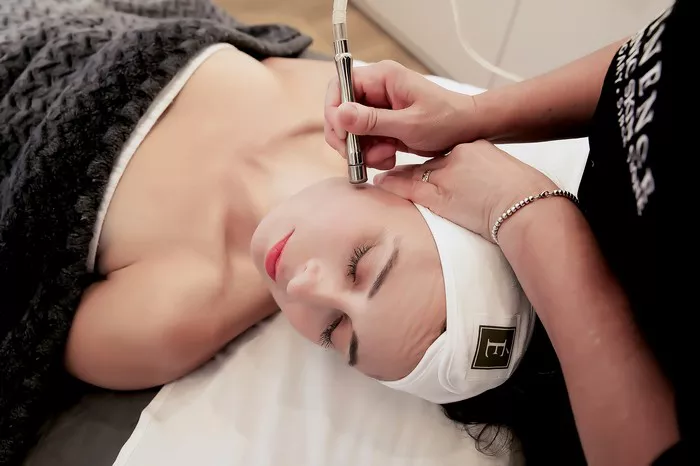When it comes to achieving smooth, rejuvenated skin, there are numerous cosmetic procedures available in the market. Two popular treatments that aim to exfoliate the skin and promote a refreshed appearance are microdermabrasion and dermaplaning. Both procedures have gained recognition for their ability to improve skin texture and reveal a radiant complexion. But how do they differ, and which one is better? Let’s explore the world of microdermabrasion and dermaplaning to understand their unique benefits and determine which treatment might be more suitable for your skin.
Understanding Microdermabrasion
Microdermabrasion is a non-invasive procedure that involves exfoliating the outermost layer of the skin, called the stratum corneum, to reveal a smoother and more youthful-looking complexion. During the treatment, a handheld device emits tiny crystals or uses a diamond-tipped wand to gently abrade the skin’s surface. Simultaneously, a vacuuming mechanism removes the exfoliated skin cells and the crystal particles. The process helps to stimulate collagen production, improve skin texture, and reduce the appearance of fine lines, mild acne scars, and age spots.
Exploring Dermaplaning
Dermaplaning is another exfoliating treatment that focuses on removing the vellus hair (commonly known as “peach fuzz”) and dead skin cells from the face. In this procedure, a sterile surgical blade is used to gently scrape the skin’s surface at a 45-degree angle. The blade is carefully maneuvered across the face, effectively removing the superficial layer of dead skin cells and hair. The process leaves the skin looking smoother and brighter, with a fresh and clean appearance.
The Key Differences
While both microdermabrasion and dermaplaning aim to exfoliate the skin and enhance its texture, there are some significant differences between the two procedures.
- Mechanism of Exfoliation: Microdermabrasion employs either crystals or a diamond-tipped wand to exfoliate the skin mechanically, while dermaplaning uses a surgical blade to scrape away the dead skin cells and vellus hair.
- Depth of Exfoliation: Microdermabrasion targets the outermost layer of the skin, the stratum corneum, for exfoliation. Dermaplaning, on the other hand, removes the superficial layer of dead skin cells and hair, offering a deeper exfoliation.
- Hair Removal: One of the primary focuses of dermaplaning is the removal of vellus hair. Microdermabrasion, however, is not specifically designed for hair removal.
- Suitability for Different Skin Types: Microdermabrasion is generally suitable for most skin types, including sensitive skin. It is a versatile treatment that can be customized to address various skin concerns. Dermaplaning is also suitable for most skin types but may not be recommended for those with active acne or certain skin conditions.
- Benefits for Skin Concerns: Microdermabrasion is effective in improving skin texture, reducing the appearance of fine lines, mild acne scars, and age spots. It also helps to stimulate collagen production. Dermaplaning primarily focuses on exfoliation and can make the skin appear smoother and brighter, but it may not be as effective for addressing specific skin concerns.
Choosing the Right Treatment for Your Skin
Deciding between microdermabrasion and dermaplaning depends on your specific skin concerns, preferences, and goals. Here are some factors to consider:
- Skin Sensitivity: If you have sensitive skin or are prone to redness or irritation, microdermabrasion might be a more suitable option, as it provides a controlled exfoliation process.
- Targeted Skin Concerns: If you are primarily concerned with fine lines, age spots, or acne scars, microdermabrasion may offer more targeted benefits. Its ability to stimulate collagen production can also be beneficial for overall skin rejuvenation.
- Desire for Hair Removal: If you have noticeable vellus hair on your face that you wish to remove, dermaplaning would be the preferred choice, as it specifically targets hair removal while exfoliating the skin.
- Frequency of Treatments: Microdermabrasion typically requires a series of treatments spaced several weeks apart to achieve optimal results. Dermaplaning can be performed less frequently, usually every four to six weeks, as the effects are longer-lasting.
- Consult a Professional: It is essential to consult with a licensed aesthetician or dermatologist to assess your skin type, concerns, and goals. They can provide personalized recommendations and guidance on which treatment would be most suitable for you.
Post-Treatment Care
After both microdermabrasion and dermaplaning treatments, it is crucial to take care of your skin to maintain the results and prevent any potential complications. Some general post-treatment care tips include:
- Sun Protection: Apply a broad-spectrum sunscreen with an SPF of 30 or higher to protect your skin from harmful UV rays, as it becomes more sensitive after exfoliation.
- Moisturize: Hydrate your skin with a gentle moisturizer to maintain its moisture barrier and prevent dryness or irritation.
- Avoid Harsh Products: Refrain from using abrasive or exfoliating products immediately after the treatment to prevent further irritation.
- Follow Professional Recommendations: Follow any specific post-treatment instructions provided by your aesthetician or dermatologist to ensure optimal healing and results.
The Verdict
While both microdermabrasion and dermaplaning are effective exfoliating treatments that offer unique benefits, the choice between the two depends on your individual needs. Microdermabrasion is a versatile option that addresses specific skin concerns and is suitable for various skin types. Dermaplaning, on the other hand, focuses on exfoliation and hair removal but may not be as effective for targeted concerns. Consulting with a skincare professional can help you determine the most appropriate treatment for your skin type and goals, ensuring that you achieve the desired results safely and effectively.


